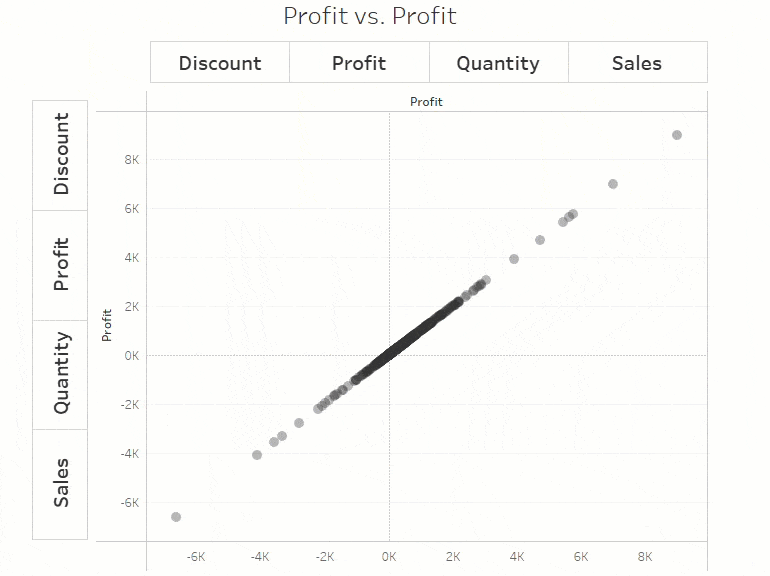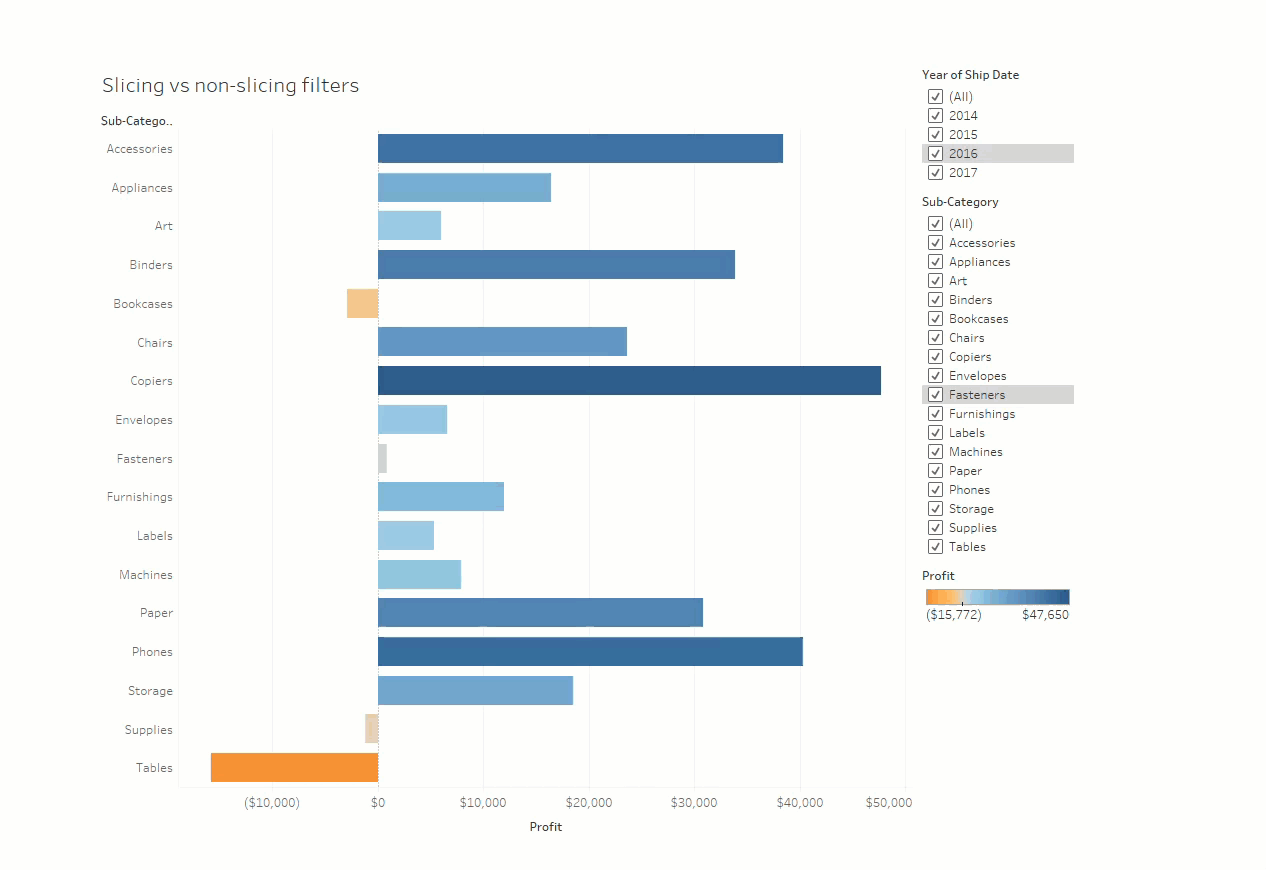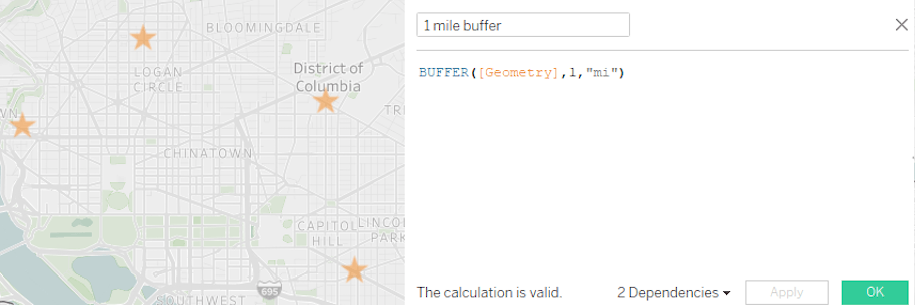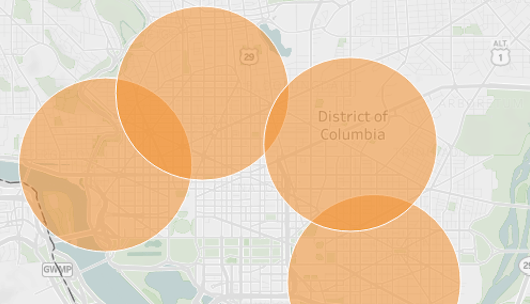Now in beta: Viz animations, dynamic parameters, and buffer calculations for maps
The Tableau 2020.1 beta has arrived, with exciting ways to add powerful interactivity to your data. Here’s a quick overview of the highlights:
- Dynamic parameters — We’ve never been happier to announce a feature. With dynamic parameters, say goodbye to making constant updates to your dashboard parameters as your data changes.
- Viz animations — Visually follow the movement of marks in a viz to better understand how your steps in Tableau impact the results of your visualizations.
- Buffer by distance calculations — Bring your spatial analysis to the next level with buffer calculations for maps to help you better understand proximity between marks.
Let’s take a deeper look at some of the biggest features in this release.
Keep up as your data changes with dynamic parameters
You asked, and we delivered! In Tableau 2020.1, we’ve made the most requested feature on the Tableau Ideas Forum a reality. Say hello to dynamic parameters! That’s right—you no longer have to republish workbooks that contain parameters every time the underlying data changes.
Set up your parameter once and Tableau will automatically update the parameter value based on a rule every time someone opens the workbook. To do this, open the parameter dialog and notice a new “When workbook opens” option. Change the dropdown’s selection to the relevant field and now Tableau will update the parameter’s list of values according to the column you selected—that’s it!

Bring your data stories to life with viz animations in Tableau
Bring life to your dashboards in a new way with viz animations. This feature applies animated transitions to marks on a visualization to show how data changes when you take an action in Tableau, like filtering or sorting. Animations are designed to automatically animate all viz types in Tableau including bar charts, scatter plots, and area charts.

Credit: Tableau Zen Master Andy Kriebel
Animations are a powerful tool for revealing and explaining the analytical steps that lead up to a visualization. For example, picture the bar chart below—as you filter out certain years or sub-categories, the bar lengths and positions instantly change. Now, apply animations, and as you filter out 2015, 2016, and 2014 below, it’s easy to follow how the profit is changing. When you exclude sub-categories, you can see the bars smoothly resize as they are filtered out of the view. Without this movement, these changes would be much harder to see and understand.

Enabling Animations is as simple as selecting “On” in the new Animation format pane—no setup required. And when you don’t need them, you can choose to turn them off at any time at the worksheet, workbook, or user level. We can’t wait to see how your dashboards come to life with this new feature!
Create more powerful maps with buffer calculations
Understanding proximity and distance in Tableau is easier than ever in 2020.1. We’re introducing buffer calculations, a powerful addition to Tableau’s geo-spatial toolkit. With buffer calculations, complex spatial analysis becomes approachable to everyone. Give Tableau three parameters—location, distance, and a unit of measure—and it instantly creates a buffer or boundary! The example below shows four store locations in Washington, DC. After creating a simple calculation, I can visualize a one-mile buffer around the stores to see if there is any overlap between nearby stores, potentially showing some market cannibalization between the locations.


Connect to and analyze even more data
Tableau 2020.1 brings significant improvements to our connectors. We’ve updated our Salesforce connector to provide faster performance, greater flexibility, and even more data to play with. First, we changed the way we connect to Salesforce data; the connector now dynamically switches APIs depending on how large your dataset is, greatly increasing performance. Additionally, the Salesforce connector also now supports using the Salesforce Object Query Language (SOQL) in the same way that Custom SQL can be used today, adding flexibility to your analysis. Finally, you will now be able to connect to additional data objects like Salesforce Activity History and Campaign Influence, giving you even more data to see and understand in Tableau.
We’ve also added Snowflake Role support to our Snowflake connector. It is now possible to override the default role in the Snowflake dialog, and the role defined in the connection can be applied in OAuth scenarios.
Manage a more scalable Tableau deployment
We know managing license keys for thousands of Creators can be cumbersome. That’s why we’re excited to introduce login-based license management. Login-based license management allows Creators to activate Tableau Desktop or Tableau Prep by simply logging in to these products with their Tableau Server credentials—no product key needed. Admins can assign, monitor, and reclaim Tableau Desktop or Tableau Prep access directly from Tableau Server instead of distributing license keys to end users. This licensing option is available to role-based customers. Contact your account team to learn more.
We’re also making Tableau Server more flexible. As part of the Server Management Add-on, you can now leverage network storage devices for backup snapshots, which significantly reduces the time required to perform a backup. You can also use this new capability to streamline your deployment topology by centralizing your file store, eliminating the need to run file stores on multiple nodes in a Tableau Server cluster.
New operating system requirements for Tableau Server
To make Tableau Server even more scalable, performant and secure, we’re taking advantage of new operating system level containerization technologies. Starting with this release, Tableau Server will require Windows Server 2016, Windows Server 2019, or Linux. With this change, we will end support for Windows Server 2012 and Windows Server 2012 R2 for new versions of Tableau Server in 2021. Check out this post to learn more.
Be part of the latest and greatest: Sign up for the pre-release program
We’re working hard to get Tableau 2020.1 out the door, but we need your input first! We invite you to give us feedback so we can identify any issues and ensure the highest quality for these new features. Features included in beta and in the final version of Tableau 2020.1 may change over time as we complete beta testing.
Join the Tableau pre-release community to:
- Participate in alpha and beta programs for early access to new features, versions, and products.
- Engage directly with the Tableau development team through user research, product discussions, and feedback activities around topics you care about.
Verwante verhalen
Subscribe to our blog
Ontvang de nieuwste updates van Tableau in je inbox.








